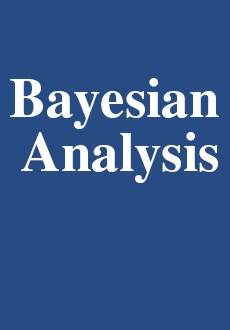Abstract
Traditional models for areal data assume a hierarchical structure where one of the components is the random effects that spatially correlate the areas. The conditional autoregressive (CAR) model is the most popular distribution to jointly model the prior uncertainty about these spatial random effects. A limitation of the CAR distribution is its inability to accommodate high correlations between neighboring areas. We propose a new model for areal data that alleviates this problem. We represent the map by an undirected graph where the nodes are the areas, and randomly-weighted edges connect nodes that are neighbors. The model is based on a spatially-structured, multivariate Normal/Independent(NI) distribution, in which the precision matrix is indirectly built assuming a multivariate distribution for the random edge effects. The joint distribution for the edge effects is a spatial multivariate NI distribution that induces another NI distribution for the areas’ spatial effects, which inherit its capacity to accommodate outliers and heavy-tailed behavior. Most important, it can produce a higher marginal correlation between the spatial effects than the CAR model overcoming one of the main limitations of this model. We fit the proposed model to analyze real cancer maps and compared its performance with several state-of-art competitors. Our proposed model provides better fitting in almost all cases.
Funding Statement
This work was funded by Coordenação de Aperfeiçoamento de Pessoal de Ensino Superior (CAPES), Conselho Nacional de Desenvolvimento Científico e Tecnológico (CNPq), Fundação de Amparo à Pesquisa do Estado de Minas Gerais FAPEMIG.
Acknowledgments
We want to thank the careful reading of two reviewers and the Associate Editor. Their suggestions were invaluable and they contributed to improving the article substantially.
Citation
Danna L. Cruz-Reyes. Renato M. Assunção. Rosangela H. Loschi. "Inducing High Spatial Correlation with Randomly Edge-Weighted Neighborhood Graphs." Bayesian Anal. 18 (4) 1247 - 1281, December 2023. https://doi.org/10.1214/23-BA1390
Information





